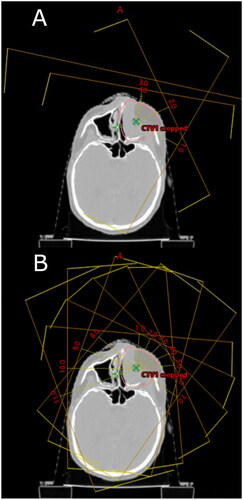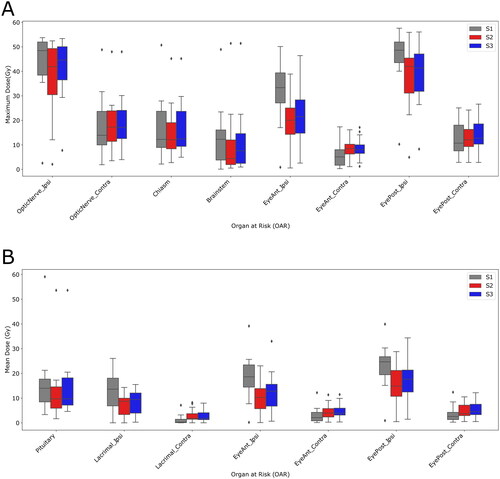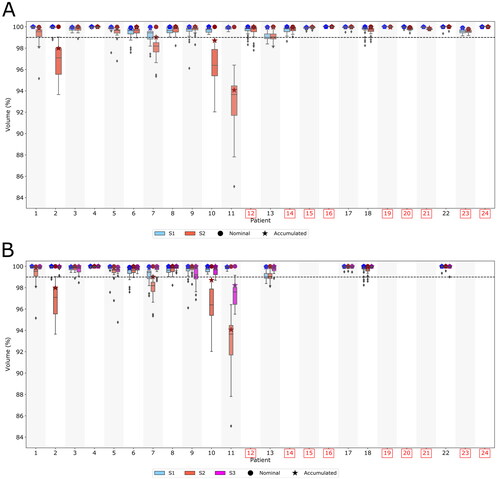Figures & data
Figure 1. Beam configuration for the planning strategies: (A) S1, (B) S2. S1: Conventional field configuration, S2: Pseudo-arc configuration. The gantry angles for the S1 configuration shown in this figure are 10, 65, 120 and 40 degrees. For the 40 degrees gantry angle the couch is rotated to 285 degrees, for the other gantry angles the couch is in zero degree.

Figure 2. Maximum (A) and mean (B) doses to OARs for plans S1, S2 and S3. S1: Conventional field configuration, S2: Pseudo-arc configuration without range shifter, S3: Pseudo-arc configuration with range shifter, Ipsi: ipsilateral, Contra: contralateral.

Figure 3. Upper panel (A): CTV coverage (V95%) for S1 and S2. The patients with the label in red were planned with range shifter for S2. Lower panel (B): CTV coverage (V95%) for the three plans (S1, S2, S3) for the patients that did not require range shifter for S2. The stars represent the accumulated CTV coverage over the whole treatment. S1: Conventional field configuration, S2: Pseudo-arc configuration without range shifter, S3: Pseudo-arc configuration with range shifter.

Supplemental Material
Download MS Word (1.1 MB)Data availability statement
The data that support the findings of this study are available on request from the corresponding author, [RAP].
